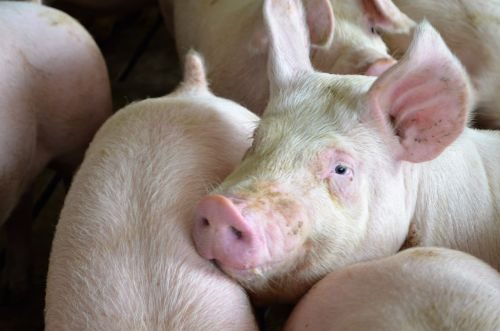Swine Industry Lessons Learned from 2016 and Looking Ahead to a New Year
Posted: February 3, 2017 | Written By: Simon Kern, M.S., Form-A-Feed Swine Group Manager

For most hog producers, 2016 was a year to forget. While feed costs actually fell from 2015 (down just over $5 per weaned pig marketed), profitability proved to be elusive. According to Iowa State University’s Estimated Livestock Returns for 2016, farrow-to-finish producers averaged a loss of $4.72 per head with five profitable months. Wean-to-finish producers fared even worse with losses escalating to $15.72 per head with only two profitable months. To make matters worse, lower fertilizer prices reduced the value of manure offering only $2.50-3.00 per finished pig in manure credit to apply to a cropping operation.
If feed costs were not the driver of these losses, what was the culprit? Most fingers are pointing to record high pig inventories, pig slaughter, and total pork production. This pushed packing plants to the brink of capacity and forced both domestic and international consumers to eat their way through a glut of pork in cold storage. This allowed packers to slide into the driver’s seat and not overbid to fill their chain space. The spread between the pork cutout value and the net lean hog carcass price (gross packer margin) remained in the black throughout the year; gradually climbing through quarters 3 and 4 and peaking at nearly $30 per hundredweight (over $60 per head!).
The simultaneous occurrence of negative producer margins and large positive packer margins has put into motion some drastic changes. Many small producers and several midsize production companies have opted to either move out of pig ownership and into contract production or to sell their barns/businesses outright to larger firms. Additionally, interest in producer/integrator owned packing plants has become rather frenzied with new construction and/or remodeling already underway on four packing plants: Seaboard Triumph Foods (Sioux City, Iowa), Prime Pork (Windom, Minnesota), Prestage Foods (Eagle Grove, Iowa), and Clemens Food Group (Coldwater, Michigan). All plants are expected to be operational in either 2017 or 2018 and will add substantial slaughter capacity.
The construction of new packing capacity offers some positives. Due to the location of these plants, the Midwest is set to remain the epicenter of U.S. pork production. Opportunities for contract production, grain marketing, and growth in allied industries (trucking, construction, etc.) all look to be plentiful. For those remaining in pig ownership, there also looks to be opportunity in the form of increased competition to fill chain space. With new buyers entering the marketplace and increased total packing capacity, producers should be able to capture a larger piece of the pie and squeeze the difference between carcass and cutout values.
In the shorter term, summer lean hog prices have held steady in the mid-70’s and should offer positive margins for farrow-to-finish operators as well as wean-to-finish operators purchasing formula priced isoweans. With 2016 in the rearview mirror, it is important to learn from the tough times of the past while not letting previous challenges impede future progress. There are many opportunities to look forward to in 2017 and the years ahead. Those of us at Form-A-Feed look to continue to be or become your partner in bringing new innovations to the table which will improve your production and enhance the profitability of your operation. Together Towards Tomorrow.